Rembrandt Harmensz. van Rijn
Paintings
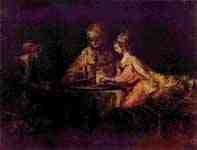
Ahasuerus and Haman at the feast of Esther
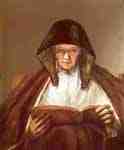
Old woman, reading
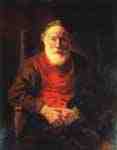
Old man in the armchair
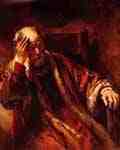
Old man in the armchair
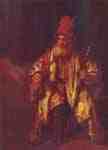
Old man in the armchair
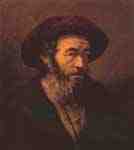
Old man with fur cap
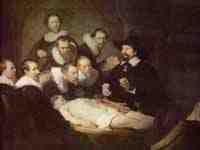
Anatomy Lesson of Dr. Tulp
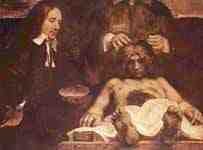
Anatomical Lecture of Dr. Deyman , fragment
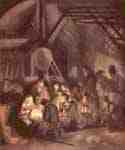
Adoration of the Shepherds
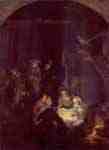
Adoration of the Shepherds
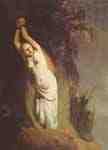
Andromeda chained to the rocks
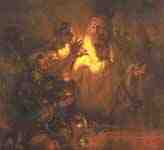
Apostle Peter denies Christ
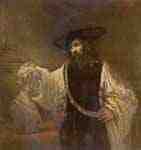
Aristotle with a Bust of Homer
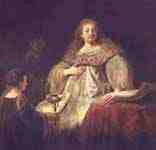
Artemisia
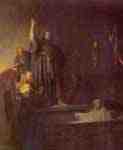
Raising of Lazarus
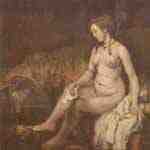
Bathsheba with King David's Letter
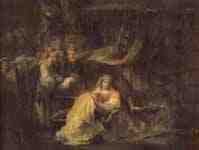
Circumcision of Christ
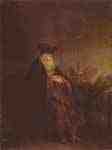
Biblical figure
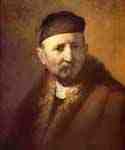
Bust of an old man with cap
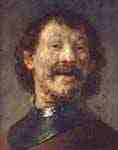
Bust of a laughing man
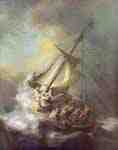
Christ in the Storm on the Sea of Galilee
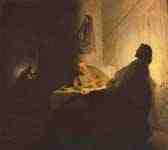
Christ at Emmaus
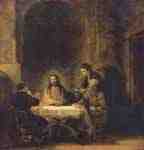
Christ at Emmaus
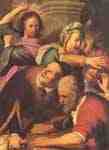
Christ driving the moneychangers out of the temple
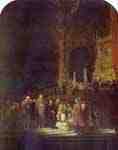
Christ and the adulteress
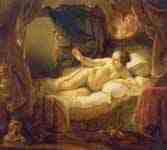
Danae
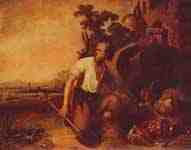
The parable of the treasure seeker
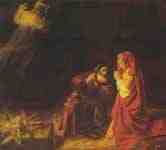
The sacrifice of Manoah
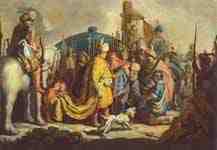
David with Goliath's head before Saul
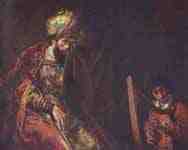
David playing the harp before Saul
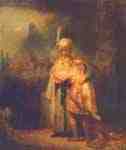
David's Farewell to Jonathan
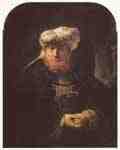
The Leper King Uzziah
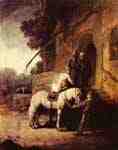
The Good Samaritan
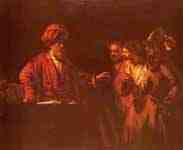
The centurion Cornelius
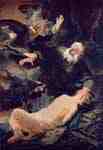
The angel prevents the sacrifice of Isaac
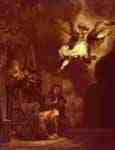
The angel leaves the family of Tobias
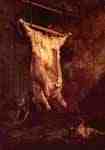
The Slaughtered Ox
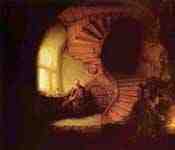
The philosopher
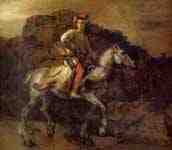
The Polish Rider
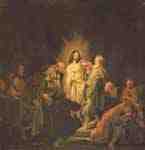
The Doubting Thomas
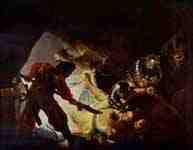
The Blinding of Samson
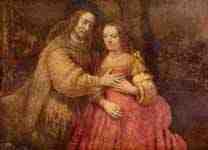
The Jewish Bride ( Bride and groom )
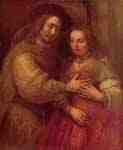
The Jewish Bride ( Bride and groom ) , detail
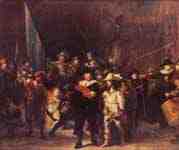
The Night Watch
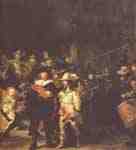
The Night Watch, Detail
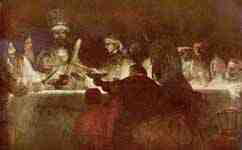
The Conspiracy of the Batavians
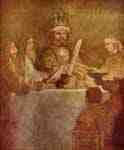
The Conspiracy of the Batavians, Detail
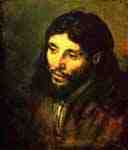
A Christ " after life "
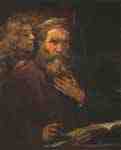
Evangelist Matthew and the Angel
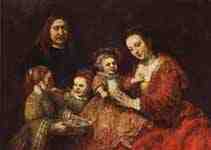
Family Portrait
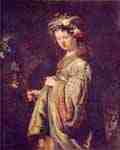
Flora ( Portrait of Saskia as Flora )
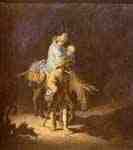
Flight to Egypt
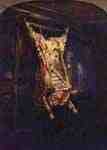
Slaughtered Ox
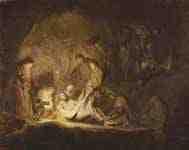
Entombment of Christ
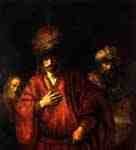
Haman in disgrace
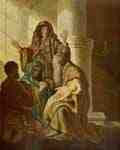
Hannah and Simeon at the temple
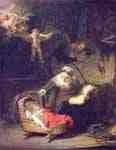
Holy Family
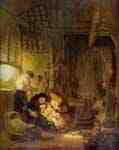
Holy Family
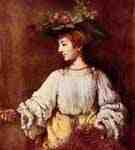
Hendrickje as Flora
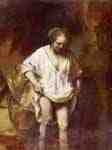
Hendrickje bathing
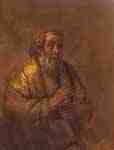
Homer
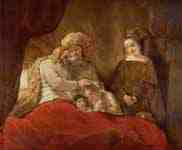
Jacob Blessing the Sons of Joseph
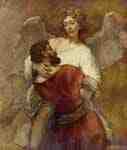
Jacob wrestling with the angel
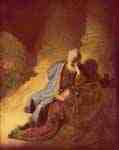
The Prophet Jeremiah Mourning over the Destruction of Jerusalem
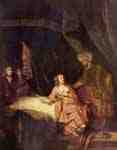
Joseph accused by Potiphar's wife
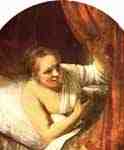
Young woman in bed
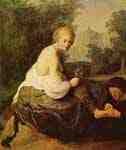
Old and Young Woman
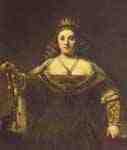
Juno
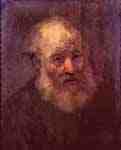
Head of an old man
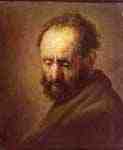
Head of a Man
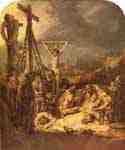
Descent from the Cross
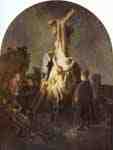
Descent from the Cross
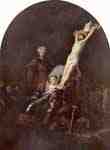
Raising of the Cross
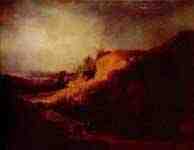
Landscape with the Baptism of the Treasurer
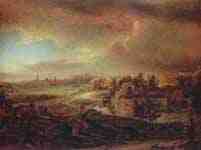
Landscape with Carriage
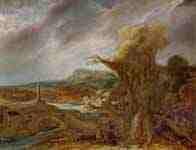
Landscape with Obelisk
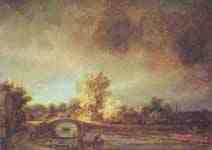
Landscape with Stone Bridge
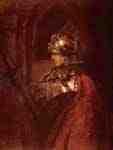
Man with arms (Alexander the Great)
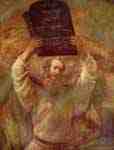
Moses with the Tablets of the Law
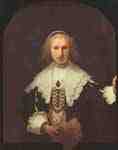
Portrait of Agatha Bas
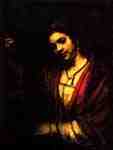
Portrait of Hendrickje Stoffels
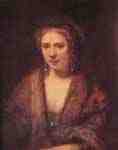
Portrait of Hendrickje Stoffels
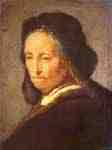
Portrait of Mother of Rembrandt
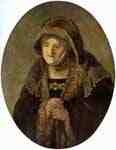
Portrait of Rembrandt's mother , Oval
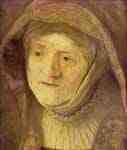
Portrait of Rembrandt's mother , detail, Oval
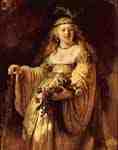
Portrait of Saskia as Flora
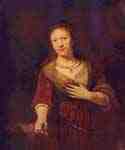
Portrait of Saskia with a Flower
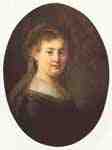
Portrait of Saskia with veil, Oval
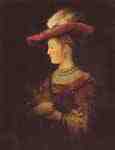
Portrait of Saskia ( Saskia as a young woman )
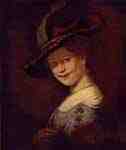
Portrait of Saskia van Uijlenburgh
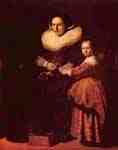
Portrait of Susanna Pellicorne and her daughter
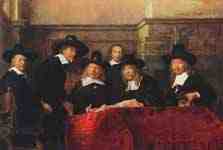
Portrait of the heads of the Drapers guild
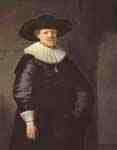
Portrait of the poet January Hermansz. Krul
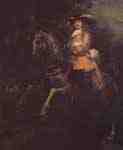
Portrait of Frederick Rihel with horse
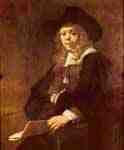
Portrait of Gerard de Lairesse
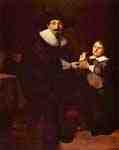
Portrait by Jan Pellicorne and his son
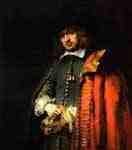
Portrait of Jan Six
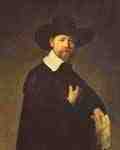
Portrait of the merchant Martin Looten
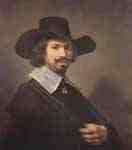
Portrait of the painter Hendrick Martensz. Sorgh
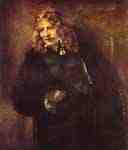
Portrait of Nicholas Bruyningh
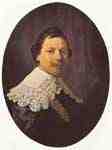
Portrait of Philips Lukasz
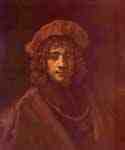
Portrait of Titus
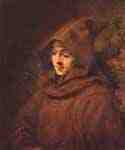
Portrait of Titus in Monk dresses
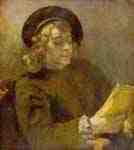
Portrait of Titus , reading
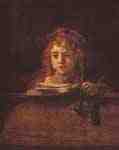
Portrait of Titus writing at a table
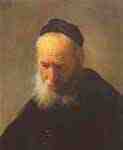
Portrait of the Father
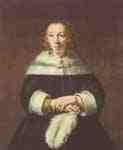
Portrait of a Lady with Ostrich Feather
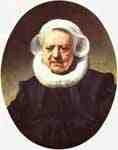
Portrait of an eighty-three year old woman
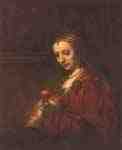
Portrait of a woman with red carnation
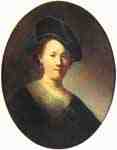
Portrait of a young woman with beaded beret
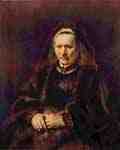
Portrait of a seated old woman
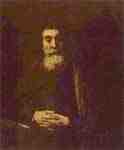
Portrait of an old man in an armchair
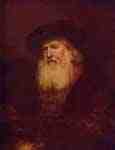
Portrait of a bearded old man
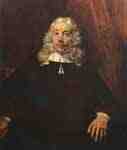
Portrait of a blond man
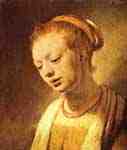
Portrait of a young girl
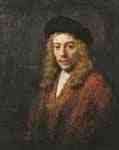
Portrait of a senior or younger man (Titus ? )
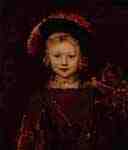
Portrait of a boy (Titus , Rembrandt's son? )
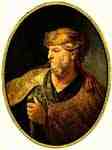
Portrait of a man in oriental dress
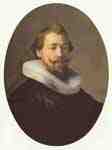
Portrait of a man
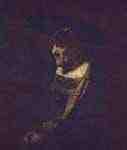
Portrait of a man with beads on the hat
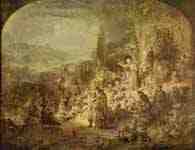
Preaching of John the Baptist
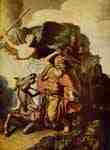
Prophet Balaam and the donkey
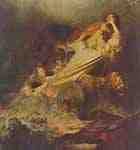
Rape of Proserpine
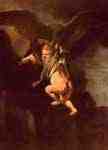
Rape of Ganymede
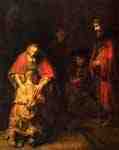
Return of the Prodigal Son
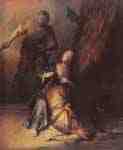
Samson and Delilah
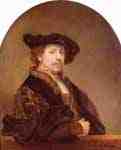
Self-portrait
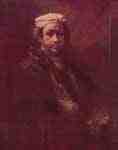
Self-portrait
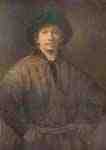
Self-portrait
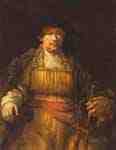
Self-portrait
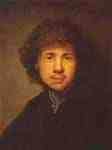
Self-portrait
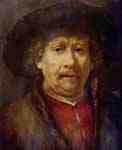
Self-portrait
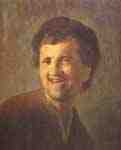
Self-portrait
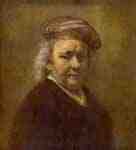
Self-portrait
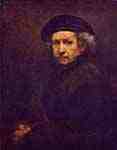
Self-portrait
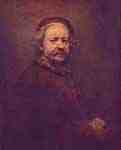
Self-portrait
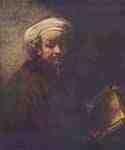
Self Portrait as the Apostle Paul
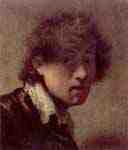
Self-portrait as a young man
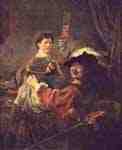
Self Portrait with Saskia
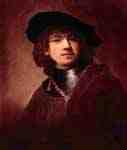
Self-Portrait ( Juvenile Self-Portrait)
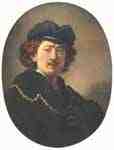
Self-portrait with hand on chest , Oval
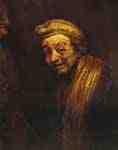
Self Portrait with painter stick
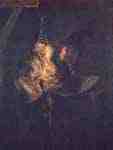
Self-portrait with a dead bittern
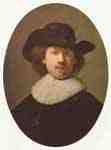
Self-portrait, oval
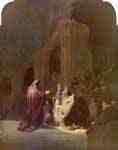
Simeon in the Temple
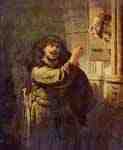
Samson, giving up on the wedding table the puzzle
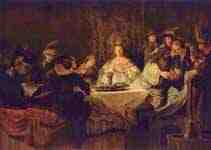
Simson threatened his father in law
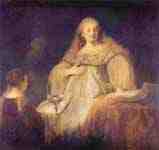
Sophonisbe receives the cup of poison
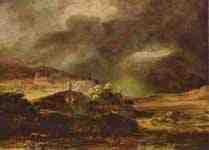
City on a hill in stormy weather
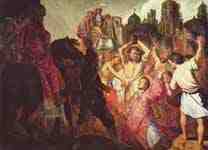
Stoning of St. Stephanus
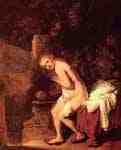
Susanna and the Elders
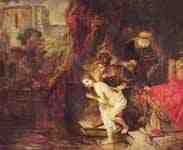
Susanna and the Elders
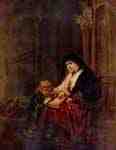
Timothy and his grandmother
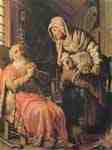
Tobit and Anna with the Kid goat
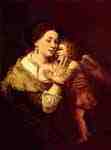
Venus and Amor
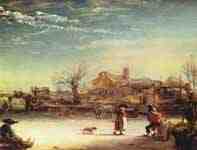
Winter landscape
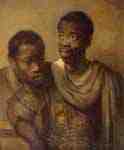
Two young Africans
Drawings
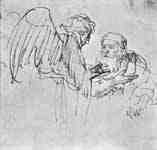
Abraham in conversation with the angel
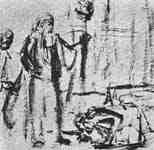
Abraham's call
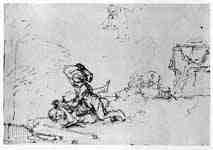
Farewell of Tobias
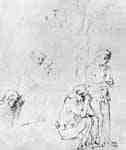
Adam and Eve after the Fall
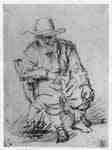
Old man in the armchair
Old man sitting in an armchair
Old man with wide hat
Adoration of the Shepherds
Adoration of the Magi
Adoration of the Magi
Adoration of a king
View of the singles in Amersfoort
View of London
On the road to Emmaus
Departure to the Flight into Egypt
Raising of the daughter of Jairus
Raising of the daughter of Jairus
Visit of the three angels with Abraham
Visitation
Lamentation of Christ , fragment
Balaam and the donkey
Blind hurdy-gurdy player with boys
Boaz met Ruth
Boaz pours grain into Ruth's coat
Lamentation of Christ
Christ appeared to Mary Magdalene
Christ raised the daughter of Jairus
In the garden of Gethsemane
Christ by Pilate presents the masses , " Behold the man"
Christ Walking on the Water
Daniel in the Lion's Den
Daniel's vision on water Ulai
The Last Supper
The Emmausmahl
The Emmausmahl
The Banquet of the Pharisee Simon
The parable of the unforgiving servant
The judgment of God at Mount Carmel
The sacrifice of Manoah
The sacrifice of Manoah
David met Abigail
David on his deathbed
News of Uriah disobedience
Message Uriah 's death
David prevents Abishai to kill Saul
David playing on the harp before Saul
David transmits Nathan his son's education
David spared Saul
David will be delivered the crown of Saul
Delilah calls the Philistines
The Angler
The barnherzige Samaritan
The barnherzige Samaritan
The barnherzige Samaritan
The barnherzige Samaritan
The covenant between David and Jonathan
The collection of the young Solomon
The angel appearing to Joseph in a dream
The angel appearing to Joseph in a dream
Hagar and the Angel
Hagar and the Angel
The Levite and the Krebsweib
The Lion and the Prophet
The prophet Nathan to David
The prophet Nathan to David
The prophet Nathan to David
The enthroned Emperor Timur
The death of the disobedient prophet
The naughty boy
The Doubting Thomas
The Prodigal Son among pigs
The Prodigal Son prostitutes
The prodigal son pulls into a foreign
The twelve year old Christ in the Temple
The departure of the disobedient prophet
Noah's Ark
The resurrection of the daughter of Jairus
The Finding of Moses
The Finding of Moses
The Release of Peter from prison
release of Peter
The Calling of Moses
The appointment of Gideon
The brothers of Joseph
The brothers tackle Joseph
The brothers throw Joseph into the pit
The adulteress before Jesus
The adulteress before Jesus
The women at the grave
Washing of the Feet
The Holy Family
The Healing of the Blind
The Return of the Prodigal Son
Carrying the Cross
The men of Sodom before Lot's house
The iniquity of Gibeah
The Sacrifice of Isaac
The stoning of Stephen
The Baptism of Christ
The Baptism of the Eunuch
The reconciliation with Esau
The Repudiation of Hagar
The Repudiation of Hagar
The Repudiation of Hagar
The vision of Peter
Three guild head
An elephant
Loss of the Ark of the Covenant
Eli scolds Hanna
Eli is God's judgment announced
Elijah by the brook Cherith
Elijah and the boys
Elijah and the Angel in the Desert
Elijah and the Widow of Zarephath
Elijah before the cave at Horeb
Elijah is fed by ravens
Eliezer and Rebecca at the Well
Elisa gets the ax out of the water
Esau sold his birthright
Esau sold his birthright
Esau sold his birthright
Esther falls in front of the king fainted
Esther is presented Ahasuerus
Esther's banquet
Eva reaches Adam the apple
raid Petri
Woman who carries a child down the stairs
Woman in North Holland Costume, Rückenfigur
Woman ( Saskia ? ) , Sitting at a window
Arrest of Christ
Arrest of Christ
Homestead on the water
Homestead on a canal
Homestead on a country road
Society by candlelight
Parable of the unforgiving servant
Parable of the Pounds
Parable of the Workers in the Vineyard
Parable of the royal wedding
God appears to Abraham
Grabtragung
Hargar at the fountain
Hagar and the Angel
Haman obtained order for the extermination of the Jews
Hanna bids farewell to Samuel , detail
House next to the forest
Healing the mother of Peter's
Healing of the leper
Return of the Prodigal Son
Return of the Prodigal Son
Execution of John the Baptist
Job, his wife and his friends
Homer wears seal before
Isaac blessed Jacob
Isaac blessed Jacob
Isaac blessed Jacob
Isaac refused Esau 's blessing
Jael kills Sisera
Jael kills Sisera
Jacob sees the bloody rock
Jacob sleeps
Jacob falls to the ground unconscious
Jacob and Rachel, Joseph listen to
Jacob is welcomed by Laban
Jacob's prayer
Jacob's death
Jacob's Dream
Jacob's Dream
Jacob's Dream
Jan Six , writing
Jesus and the Canaanite woman
Jesus and the Canaanite woman
Jesus and his disciples in the storm on the Sea of Galilee , "Lord, save us: we perish "
Jesus with Mary and Martha
Jesus with Mary and Martha
Jesus in the midst of his disciples
Jesus and the Samaritan Woman
Jesus and the Samaritan Woman
Jesus and the Samaritan Woman
Jesus , strengthened by the angel
Jesus before the Sanhedrin
Jesus is led to the interrogation
Jesus between disciples and the Pharisees
Jonah outside the city walls of Nineveh
Jonathan comforting David
Joseph and his fellow prisoners
Joseph and his fellow prisoners
Joseph tells his dreams
Joseph tells his dreams
Joseph gives himself to his brothers recognize
Joseph distributed grain in Egypt
Joseph before Pharaoh
Joseph is sold by his brothers to the Ishmaelites
Young woman at the window
Young woman sleeping
Young woman sitting seminude
Young man with flower ( Titus )
Young man sleeping , sitting at table
Cain slays Abel
Cain and Abel
Nanny and child essendes
Kneeling female nude model
Sick woman in bed and maid
Raising of the Cross
crucifixion
crucifixion
Cross
Cross
Laban in the sheep shearing
Laban examines the idols Rahel
Sufferer implore the help of Jesus
Lot and his family leaving Sodom
Lot and his family leaving Sodom
Lot and his daughters
Lioness tearing a bird
Male nude , standing
Male Nude Model , bent forward
Manoah and his wife in prayer
Manoah and his wife before the angel
Moses on Mount Nebo
Moses and the dead
Moses and Aaron before Pharaoh
Naming of John the Baptist
Nicodemus to Jesus at night
Noli me tangere
Oriental tab
Peter in prayer for Tabea
Peter and John at the Golden Gate
Peter and John at the Golden Gate
Peter with Tabea
Portrait of Saskia with a Turban
Portrait of Jan Six
Portrait of the Father
Portrait of a man
Portrait of a guild superintendent
Portrait of Rembrandt's mother
Potiphar's wife slandered Joseph
Potiphar's wife slandered Joseph
Rebecca gives drink to Eliser
Rembrandt's studio
Ruben at the empty fountain
resting Lion
Solomon's idolatry
Samuel with Eli at night
Sarah complains about Hagar
Sarah leads Hagar to Abraham
Saul and the fortune teller in Endor
Sleeping Woman ( Hendrickje )
Sleeping young man
Six Jews in a synagogue
self-portrait
self-portrait
self-portrait
Samson in the lap of Delilah
Seated Woman
Seated man with stick
Dying Warrior ( Goliath )
Death words Christi
Study for the "Hundred Guilder sheet "
Study for Jacob's action
Study of two women with young children
Study to Manoah 's wife
Study to the outgoing angel
Study on the drunken Lot
Study on temptation
Study sheet , Street Scene
study sheet
baptism of Christ
The banks of the Amstel
Annunciation to the Shepherds
Annunciation to the Shepherds
Annunciation to Mary
Annunciation to Zacharias
denial of Peter
Marriage of Mary and Joseph
Mocking of Christ , " Hail Thou, O king of the Jews"
temptation of Christ
Temptation of Christ by the Devil
Four Orientals
Four sheiks
female Nude
Female nude , seated on a stool
Female nude , lying
Female nude , lying
Female nude , lying
Female nude , seated
Female nude model , his hands resting on a basket
Female nude , in profile
Female nude , in profile , his hands resting on a basket , man's head in the background
Female nude , sleeping
Female nude , seated , in profile
Female nude , seated, back
Female nude , standing
Signing young man
Two old shepherd
Two farmhouses
Sarah and Hagar
Two women on church
Two studies of the sleeping Saskia
Grafiken
Abraham hosted the angels
Abraham in conversation with Isaac
Abraham , Isaac caressing
Abraham's sacrifice
Adam and Eve
allegory
Old beggar
View of Amsterdam
Sitting on a mound of earth beggars
bearded man
Beggars and beggar . entertainment
Beggars and beggar behind a mound
Man with cap
Christ on the Cross
Christ on the Cross
Christ on the Mount of Olives
Christ appears to the disciples
Christ at Emmaus
Christ at Emmaus
Christ driving the traders from the temple
Christ and the Samaritan Woman
Christ and the Samaritan Woman
Ecce homo
Ecce homo
The Kolf game
The estate of Goldwägers
The Lovers and the death
The praise of navigation
The couple and the sleeping shepherd
The cavalry engagement
The pig
The Good Samaritan
The farmer with wife and child
The Praying David
The beggar with the Glutpfanne
The Blind Fiddler
The blind Tobias
The Twelfth Night
The goldsmith
The barn and the flock of sheep
The boat under the trees
The Card Players
The teaching of Christ
The man in the arbor
The Obelisk
The Omval
The Persian
The man pissing
The Quack
The rider
The Repentant Peter
The Sleeping Dog
The Schoolmaster
The boy Jesus and the scribes
The boy Jesus and the scribes
The wooden leg
The bull
Death of Mary
The Triumph of Mardochäus
The Prodigal Son
The edge of a wood
The Artist
The signatories on the model
The Tribute Money
Diana in the Bath
The Adoration of the Shepherds
The Adoration of the Shepherds
The bathing men
The Circumcision of Christ
The Beggar at the door
The Bridge
The Presentation in the Temple
The Presentation in the Temple
The three cabins
The three crosses
The three crosses
The Three Orientals
The Beheading of John the Baptist
The family of Tobias and the Angel
The Flight into Egypt
The Flight into Egypt
The Flight into Egypt
The Entombment
The Entombment
The Holy Family
The Holy Family with the cat
The cottage at the big tree
The hut behind the board fence
The cottage and barn
The cottages on the canal
The Descent from the Cross
The landscape with the hunter
The landscape with the milkman
The landscape with the square tower
The landscape with the draftsman
Landscape with the shepherd family
The Reader
The Lion Hunt
The Shell
The pancake baker
The Pissing Woman
The Rest on the Flight
The Rest on the Flight
The Sorrows
The so-called " Great Raising of Lazarus "
The so-called " Great Escape to Egypt "
The so-called " Great Jewish Bride "
The so-called " Great Cross "
The so-called " Great Lion Hunt "
The so-called " Small Raising of Lazarus "
The so-called " Small circumcision "
The so-called " Small Presentation in the Temple "
The so-called " Small Flight into Egypt "
The so-called "Little Jewish Bride "
The so-called "Little Lion Hunt "
The so-called white Mohrin
The synagogue
The baptism of the eunuch
The Annunciation to the Shepherds
The Repudiation of Hagar
The wandering musicians
The windmill
Three old man heads
Ecce homo
Eulenspiegel
fist
Woman with long hair
Entombment of Christ
old man
Old man , Rückenfigur
Large standing beggar
St. Francis
St. Jerome
St. Jerome in the willow stump
St. Jerome in prayer
St. Jerome in prayer
St. Jerome in the Room
St. Jerome
Hundred Guilder Print
Illustration to " Piedra gloriosa "
Illustration to " Piedra gloriosa "
Illustration to " Piedra gloriosa "
Illustration to " Piedra gloriosa "
Jacob, the death of Joseph Mourning
Jesus among the Doctors
Jesus with his parents
Joseph , his dreams telling
Joseph and Potiphar's wife
Jew with high hat
Young girl with hand basket
Jupiter and Antiope
Jupiter and Antiope
Bald-Headed Man
Bald-Headed Man
Channel with swans
Channel with quayside
Head of an old man
Head of an old man
Head of an old man
Head of an old man
Head of an old man
Head of a Man
Head of an Oriental
Head of an Oriental
Sick woman with large headscarf
Landscape with Three Trees
Landscape with boat
Landscape with cow saufender
Landscape with tower
Reclining nude woman
Madonna in the clouds
Man with short beard
male Nude
male Nude
Medea, or the Marriage of Jason
Santander think old man
Nude woman
Nude woman
Peering down old man
Peter and John at the Temple gates
Peter and John at the Temple gates
Poles in the spring beret
Poles in high cap
Poles with stick and sword
Portrait of Jan Six dee
Portrait of mother
Portrait of mother
Portrait of mother
Portrait of mother
Portrait of mother
Portrait of mother
Rembrandt's mother
Saskia in rich costume
Portrait of Abraham Francen
Portrait of the old Haaring
Portrait of Arnold Tholinx
Portrait of Clement de Jonge
Portrait of Cornelius Claesz Anslo
Portrait of Ephraim Bonus
Portrait by Jan Antonides van der Linden
Portrait by Jan Asselijn
Portrait by Jan Cornelis Sylvius
Portrait by Jan Lutma the Elder
Portrait by Jan Uijtenbogaert
Portrait by Jan Uijtenbogaert
Portrait of Janus Sylvius
Portrait of young Haaring
Portrait of Samuel Manasseh ben Israel
Portrait of the writing master Coppenol
Portrait of the writing master Coppmol
Portrait of Titus van Rijn
Portrait of an old man
Portrait of a Bearded Man
Portrait of an old man
Portrait of an old man
Portrait of a boy
Portrait of a man
Portrait of a man
Portrait of a man
Portrait of a young man
Portrait of an Oriental
Portrait of an Oriental
Preciosa
Sleeping Old
Screaming Man
Screaming Man
self-portrait
self-portrait
self-portrait
self-portrait
self-portrait
self-portrait
self-portrait
self-portrait
self-portrait
self-portrait
self-portrait
self-portrait
Self-Portrait with the flat cap
self-portrait
self-portrait
self-portrait
self-portrait
self-portrait
self-portrait
self-portrait
Self Portrait with Saskia
self-portrait
self-portrait
self-portrait
Seated beggar in the armchair
female Nude
So-called Turkish slave
standing Bauer
standing Bauer
standing beggar
Standing , ragged man
Stoning of St. Stephen
Study sheet with three female heads
study sheet
study sheet
study sheet
Study sheet with self-portrait
study sheet
study sheet
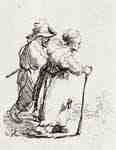
Wandering Beggar Couple
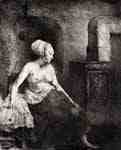
Female nude by the stove

Female nude model with the arrow
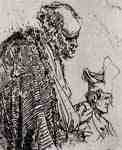
Two beggars studies
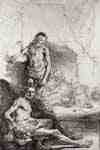
Two male nudes
Rembrandt Harmenszoon van Rijn (Dutch pronunciation: [ˈrɛmbrɑnt ˈɦɑrmənsoːn vɑn ˈrɛin], July 15, 1606 – October 4, 1669) was a Dutch painter and etcher. He is generally considered one of the greatest painters and printmakers in European art history and the most important in Dutch history.[1] His contributions to art came in a period that historians call the Dutch Golden Age.
Having achieved youthful success as a portrait painter, his later years were marked by personal tragedy and financial hardships. Yet his etchings and paintings were popular throughout his lifetime, his reputation as an artist remained high,[2] and for twenty years he taught nearly every important Dutch painter.[3] Rembrandt's greatest creative triumphs are exemplified especially in his portraits of his contemporaries, self-portraits and illustrations of scenes from the Bible. His self-portraits form a unique and intimate biography, in which the artist surveyed himself without vanity and with the utmost sincerity.[1]
In both painting and printmaking he exhibited a complete knowledge of classical iconography, which he molded to fit the requirements of his own experience; thus, the depiction of a biblical scene was informed by Rembrandt's knowledge of the specific text, his assimilation of classical composition, and his observations of Amsterdam's Jewish population.[4] Because of his empathy for the human condition, he has been called "one of the great prophets of civilization."[5]
Life
Self-portrait in a cap, with eyes wide open, etching and burin, 1630Rembrandt[6] Harmenszoon van Rijn was born on July 15, 1606 in Leiden, in the Dutch Republic, nowadays the Netherlands. He was the ninth child born to Harmen Gerritszoon van Rijn and Neeltgen Willemsdochter van Zuytbrouck.[7] His family was quite well-to-do; his father was a miller and his mother was a baker's daughter. As a boy he attended Latin school and was enrolled at the University of Leiden, although according to a contemporary he had a greater inclination towards painting; he was soon apprenticed to a Leiden history painter, Jacob van Swanenburgh, with whom he spent three years. After a brief but important apprenticeship of six months with the famous painter Pieter Lastman in Amsterdam, Rembrandt opened a studio in Leiden in 1624 or 1625, which he shared with friend and colleague Jan Lievens. In 1627, Rembrandt began to accept students, among them Gerrit Dou.[8]
In 1629, Rembrandt was discovered by the statesman Constantijn Huygens, the father of Christiaan Huygens (a famous Dutch mathematician and physicist), who procured for Rembrandt important commissions from the court of The Hague. As a result of this connection, Prince Frederik Hendrik continued to purchase paintings from Rembrandt until 1646.[9]
At the end of 1631, Rembrandt moved to Amsterdam, then rapidly expanding as the new business capital of the Netherlands, and began to practice as a professional portraitist for the first time, with great success. He initially stayed with an art dealer, Hendrick van Uylenburg, and in 1634, married Hendrick's cousin, Saskia van Uylenburg.[10] Saskia came from a good family: her father had been lawyer and burgemeester (mayor) of Leeuwarden. When Saskia, as the youngest daughter, became an orphan, she lived with an older sister in Het Bildt. They were married in the local church of St. Annaparochie without the presence of his relatives.[11] In the same year, Rembrandt became a burgess of Amsterdam and a member of the local guild of painters. He also acquired a number of students, among them Ferdinand Bol and Govert Flinck.[12]
Portrait of Saskia van Uylenburg, ca. 1635In 1635, Rembrandt and Saskia moved into their own house, renting in fashionable Nieuwe Doelenstraat. In 1639, they moved to a prominent house (now the Rembrandt House Museum) in the Jodenbreestraat in what was becoming the Jewish quarter; the mortgage to finance the 13,000 guilder purchase would be a primary cause for later financial difficulties.[12] He should easily have been able to pay it off with his large income, but it appears his spending always kept pace with his income, and he may have made some unsuccessful investments.[13] It was there that Rembrandt frequently sought his Jewish neighbors to model for his Old Testament scenes.[14] Although they were by now affluent, the couple suffered several personal setbacks; their son Rumbartus died two months after his birth in 1635 and their daughter Cornelia died at just 3 weeks of age in 1638. In 1640, they had a second daughter, also named Cornelia, who died after living barely over a month. Only their fourth child, Titus, who was born in 1641, survived into adulthood. Saskia died in 1642 soon after Titus's birth, probably from tuberculosis. Rembrandt's drawings of her on her sick and death bed are among his most moving works.[15]
During Saskia's illness, Geertje Dircx was hired as Titus' caretaker and nurse and probably also became Rembrandt's lover. She would later charge Rembrandt with breach of promise and was awarded alimony of 200 guilders a year.[12] Rembrandt worked to have her committed for twelve years to an asylum or poorhouse (called a "bridewell") at Gouda, after learning Geertje had pawned jewelry that had once belonged to Saskia, and which Rembrandt had given her.
In the late 1640s, Rembrandt began a relationship with the much younger Hendrickje Stoffels, who had initially been his maid. In 1654 they had a daughter, Cornelia, bringing Hendrickje a summons from the Reformed Church to answer the charge "that she had committed the acts of a whore with Rembrandt the painter". She admitted this and was banned from receiving communion. Rembrandt was not summoned to appear for the Church council because he was not a member of the Reformed Church.[16] The two were considered legally wed under common law, but Rembrandt had not married Henrickje, so as not to lose access to a trust set up for Titus in his mother's will.[15]
Rembrandt's son Titus, as a monk, 1660Rembrandt lived beyond his means, buying art (including bidding up his own work), prints (often used in his paintings) and rarities, which probably caused a court arrangement to avoid his bankruptcy in 1656, by selling most of his paintings and large collection of antiquities. The sale list survives and gives us a good insight into his collections, which apart from Old Master paintings and drawings included busts of the Roman Emperors, suits of Japanese armor among many objects from Asia, and collections of natural history and minerals; the prices realized in the sales in 1657 and 1658 were disappointing.[17] He was forced to sell his house and his printing-press and move to more modest accommodation on the Rozengracht in 1660.[18] The authorities and his creditors were generally accommodating to him, except for the Amsterdam painters' guild, who introduced a new rule that no one in Rembrandt's circumstances could trade as a painter. To get round this, Hendrickje and Titus set up a business as art-dealers in 1660, with Rembrandt as an employee.[19]
In 1661, he (or rather the new business) was contracted to complete work for the newly built city hall, but only after Govert Flinck, the artist previously commissioned, died without beginning to paint. The resulting work, The Conspiracy of Claudius Civilis, was rejected and returned to the painter; the surviving fragment is only a fraction of the whole work.[20] It was around this time that Rembrandt took on his last apprentice, Aert de Gelder. In 1662 he was still fulfilling major commissions for portraits and other works.[21] When Cosimo III de' Medici, Grand Duke of Tuscany visited Amsterdam in 1667, he visited Rembrandt at his house.[22]
Rembrandt outlived both Hendrickje, who died in 1663, and Titus, who died in 1668, leaving a baby daughter. Rembrandt died within a year of his son, on October 4, 1669 in Amsterdam, and was buried in an unmarked grave in the Westerkerk.[23][24]
Works
The Storm on the Sea of Galilee, 1633. It is still missing after robbery from the Isabella Stewart Gardner Museum in 1990.In a letter to Huyghens, Rembrandt offered the only surviving explanation of what he sought to achieve through his art: the greatest and most natural movement, translated from de meeste en de natuurlijkste beweegelijkheid. The word "beweechgelickhijt" is also argued to mean "emotion" or "motive." Whether this refers to objectives, material or otherwise is open to interpretation; either way, Rembrandt seamlessly melded the earthly and spiritual as has no other painter in Western art.[25]
Earlier 20th century connoisseurs claimed Rembrandt had produced over 600 paintings, nearly 400 etchings and 2,000 drawings.[26] More recent scholarship, from the 1960s to the present day (led by the Rembrandt Research Project), often controversially, have winnowed his oeuvre to nearer 300 paintings.[27] His prints, traditionally all called etchings, although many are produced in whole or part by engraving and sometimes drypoint, have a much more stable total of slightly under 300.[28] It is likely he made many more drawings in his lifetime than 2,000, but those extant are more rare than presumed.[29] Two leading experts claim that the number of drawings whose autograph status can be regarded as effectively "certain" is no higher than about 75, although this is disputed. The list was to be unveiled at a scholarly meeting in February 2010.[30]
At one time about ninety paintings were counted as Rembrandt self-portraits, but it is now known that he had his students copy his own self-portraits as part of their training. Modern scholarship has reduced the autograph count to over forty paintings, as well as a few drawings and thirty-one etchings, which include many of the most remarkable images of the group.[31] Many show him posing in quasi-historical fancy dress, or pulling faces at himself. His oil paintings trace the progress from an uncertain young man, through the dapper and very successful portrait-painter of the 1630s, to the troubled but massively powerful portraits of his old age. Together they give a remarkably clear picture of the man, his appearance and his psychological make-up, as revealed by his richly weathered face.[32]
In a number of biblical works, including The Raising of the Cross, Joseph Telling His Dreams and The Stoning of Saint Stephen, Rembrandt painted himself as a character in the crowd. Durham suggests that this was because the Bible was for Rembrandt, "a kind of diary, an account of moments in his own life."[33]
Among the more prominent characteristics of his work are his use of chiaroscuro, the theatrical employment of light and shadow derived from Caravaggio, or, more likely, from the Dutch Caravaggisti, but adapted for very personal means.[34] Also notable are his dramatic and lively presentation of subjects, devoid of the rigid formality that his contemporaries often displayed, and a deeply felt compassion for mankind, irrespective of wealth and age. His immediate family—his wife Saskia, his son Titus and his common-law wife Hendrickje—often figured prominently in his paintings, many of which had mythical, biblical or historical themes.
Periods, themes and styles
The Abduction of Europa, 1632. Oil on panel. The work is considered to be "...a shining example of the 'golden age' of baroque painting."[35]Throughout his career Rembrandt took as his primary subjects the themes of portraiture, landscape and narrative painting. For the last, he was especially praised by his contemporaries, who extolled him as a masterful interpreter of biblical stories for his skill in representing emotions and attention to detail.[36] Stylistically, his paintings progressed from the early 'smooth' manner, characterized by fine technique in the portrayal of illusionistic form, to the late 'rough' treatment of richly variegated paint surfaces, which allowed for an illusionism of form suggested by the tactile quality of the paint itself.[37]
A parallel development may be seen in his skill as a printmaker. In the etchings of his maturity, particularly from the late 1640s onward, the freedom and breadth of his drawings and paintings found expression in the print medium as well. The works encompass a wide range of subject matter and technique, sometimes leaving large areas of white paper to suggest space, at other times employing complex webs of line to produce rich dark tones.[38]
It was during Rembrandt's Leiden period (1625–1631) that Lastman's influence was most prominent. It is also likely that at this time Lievens had a strong impact on his work as well.[39] Paintings were rather small, but rich in details (for example, in costumes and jewelry). Religious and allegorical themes were favored, as were tronies, half-length figures not intended as specific portraits.[39] In 1626 Rembrandt produced his first etchings, the wide dissemination of which would largely account for his international fame.[39] In 1629 he completed Judas Repentant, Returning the Pieces of Silver and The Artist in His Studio, works that evidence his interest in the handling of light and variety of paint application, and constitute the first major progress in his development as a painter.[40]
A typical portrait from 1634, when Rembrandt was enjoying great commercial success.During his early years in Amsterdam (1632–1636), Rembrandt began to paint dramatic biblical and mythological scenes in high contrast and of large format (The Blinding of Samson, 1636, Belshazzar's Feast, c. 1635 Danaë, 1636), seeking to emulate the baroque style of Rubens.[41] With the occasional help of assistants in Uylenburgh's workshop, he painted numerous portrait commissions both small (Jacob de Gheyn III) and large (Portrait of the Shipbuilder Jan Rijcksen and his Wife, 1633, Anatomy Lesson of Dr. Nicolaes Tulp, 1632).[42]
By the late 1630s, Rembrandt had produced a few paintings and many etchings of landscapes. Often these landscapes highlighted natural drama, featuring uprooted trees and ominous skies (Cottages before a Stormy Sky, c. 1641, The Three Trees, 1643). From 1640 his work became less exuberant and more sober in tone, possibly reflecting personal tragedy. Biblical scenes were now derived more often from the New Testament than the Old Testament, as had been the case before. In 1642 he painted The Night Watch, his largest work and the most notable of the important group portrait commissions which he received in this period, and through which he sought to find solutions to compositional and narrative problems that had been attempted in previous works.[43]
In the decade following the Night Watch, Rembrandt's paintings varied greatly in size, subject, and style. The previous tendency to create dramatic effects primarily by strong contrasts of light and shadow gave way to the use of frontal lighting and larger and more saturated areas of color. Simultaneously, figures came to be placed parallel to the picture plane. These changes can be seen as a move toward a classical mode of composition and, considering the more expressive use of brushwork as well, may indicate a familiarity with Venetian art (Susanna and the Elders, 1637–47).[44] At the same time, there was a marked decrease in painted works in favor of etchings and drawings of landscapes.[45] In these graphic works natural drama eventually made way for quiet Dutch rural scenes.
Self Portrait, 1658, a masterpiece of the final style, "the calmest and grandest of all his portraits".[46]In the 1650s, Rembrandt's style changed again. Paintings increased in size, colors became richer and brush strokes more pronounced. With these changes, Rembrandt distanced himself from earlier work and current fashion, which increasingly inclined toward fine, detailed works. His singular approach to paint application may have been suggested in part by familiarity with the work of Titian, and could be seen in the context of the then current discussion of 'finish' and surface quality of paintings. Contemporary accounts sometimes remark disapprovingly of the coarseness of Rembrandt's brushwork, and the artist himself was said to have dissuaded visitors from looking too closely at his paintings.[47] The tactile manipulation of paint may hearken to medieval procedures, when mimetic effects of rendering informed a painting's surface. The end result is a richly varied handling of paint, deeply layered and often apparently haphazard, which suggests form and space in both an illusionistic and highly individual manner.[48]
In later years, biblical themes were still depicted often, but emphasis shifted from dramatic group scenes to intimate portrait-like figures (James the Apostle, 1661). In his last years, Rembrandt painted his most deeply reflective self-portraits (from 1652 to 1669 he painted fifteen), and several moving images of both men and women (The Jewish Bride, ca. 1666)—in love, in life, and before God .[49][50]
Etchings
The Hundred Guilder Print, c.1647-1649, etchingRembrandt produced etchings for most of his career, from 1626 to 1660, when he was forced to sell his printing-press and virtually abandoned etching. Only the troubled year of 1649 produced no dated work.[51] He took easily to etching and, though he also learned to use a burin and partly engraved many plates, the freedom of etching technique was fundamental to his work. He was very closely involved in the whole process of printmaking, and must have printed at least early examples of his etchings himself. At first he used a style based on drawing, but soon moved to one based on painting, using a mass of lines and numerous bitings with the acid to achieve different strengths of line. Towards the end of the 1630s, he reacted against this manner and moved to a simpler style, with fewer bitings.[52] He worked on the so-called Hundred Guilder Print in stages throughout the 1640s, and it was the "critical work in the middle of his career", from which his final etching style began to emerge.[53] Although the print only survives in two states, the first very rare, evidence of much reworking can be seen underneath the final print and many drawings survive for elements of it.[54]
The Three Crosses, etching by Rembrandt, 1653, State III of IVIn the mature works of the 1650s, Rembrandt was more ready to improvise on the plate and large prints typically survive in several states, up to eleven, often radically changed. He now uses hatching to create his dark areas, which often take up much of the plate. He also experimented with the effects of printing on different kinds of paper, including Japanese paper, which he used frequently, and on vellum. He began to use "surface tone," leaving a thin film of ink on parts of the plate instead of wiping it completely clean to print each impression. He made more use of drypoint, exploiting, especially in landscapes, the rich fuzzy burr that this technique gives to the first few impressions.[55]
His prints have similar subjects to his paintings, although the twenty-seven self-portraits are relatively more common, and portraits of other people less so. There are forty-six landscapes, mostly small, which largely set the course for the graphic treatment of landscape until the end of the 19th century. One third of his etchings are of religious subjects, many treated with a homely simplicity, whilst others are his most monumental prints. A few erotic, or just obscene, compositions have no equivalent in his paintings.[56] He owned, until forced to sell it, a magnificent collection of prints by other artists, and many borrowings and influences in his work can be traced to artists as diverse as Mantegna, Raphael, Hercules Segers, and Giovanni Benedetto Castiglione.
Night Watch
Main article: Night Watch (painting)
The Night Watch or The Militia Company of Captain Frans Banning Cocq, 1642. Oil on canvas; on display at the Rijksmuseum, AmsterdamRembrandt painted The Militia Company of Captain Frans Banning Cocq between 1640 and 1642. This picture was called the Nachtwacht by the Dutch and the Night Watch by Sir Joshua Reynolds because, upon its discovery, the picture was so dimmed and defaced by time that it was almost indistinguishable and it looked quite like a night scene. After it was cleaned, it was discovered to represent broad day—a party of musketeers stepping from a gloomy courtyard into the blinding sunlight.
The piece was commissioned for the new hall of the Kloveniersdoelen, the musketeer branch of the civic militia. Rembrandt departed from convention, which ordered that such genre pieces should be stately and formal, rather a line-up than an action scene. Instead he showed the militia readying themselves to embark on a mission (what kind of mission, an ordinary patrol or some special event, is a matter of debate). Contrary to years of speculation, the work was hailed as a success from the beginning. Parts of the canvas were cut off (approximately 20% from the left hand side was removed) to make the painting fit on the designated wall when it was moved to Amsterdam town hall in 1715. However, the Rijksmuseum contains a smaller reproduction of the work in what is understood to be its original form; the four, foremost figures occupy the painting's center. The painting now hangs in the Rijksmuseum, Amsterdam, where it occupies the entire rear wall of a gallery.[57]
Expert assessments
The Polish Rider - A Lisowczyk on horseback. The subject is of much discussion. It is possible that the person depicted was Grand Chancellor of Lithuania, Marcjan Aleksander Ogiński (1632-1690).In 1968 the Rembrandt Research Project was started under the sponsorship of the Netherlands Organization for the Advancement of Scientific Research; it was initially expected to last a highly optimistic ten years. Art historians teamed up with experts from other fields to reassess the authenticity of works attributed to Rembrandt, using all methods available, including state-of-the-art technical diagnostics, and to compile a complete new catalogue raisonné of his paintings. As a result of their findings, many paintings that were previously attributed to Rembrandt have been removed from their list, although others have been added back.[58] Many of those removed are now thought to be the work of his students.
One example of activity is The Polish Rider, in New York's Frick Collection. Its authenticity had been questioned years before by several scholars, led by Julius Held. Many, including Dr. Josua Bruyn of the Foundation Rembrandt Research Project, attributed the painting to one of Rembrandt's closest and most talented pupils, Willem Drost, about whom little is known. The Frick itself never changed its own attribution, the label still reading "Rembrandt" and not "attributed to" or "school of". More recent opinion has shifted in favor of the Frick, with Simon Schama in his 1999 book Rembrandt's Eyes, and a Rembrandt Project scholar, Ernst van de Wetering (Melbourne Symposium, 1997) both arguing for attribution to the master. Many scholars feel that the execution is uneven, and favour different attributions for different parts of the work.[59]
Man in a Golden helmet, Berlin, once one of the most famous "Rembrandt" portraits, no longer attributed to the masterAnother painting, Pilate Washing His Hands, is also of questionable attribution. Critical opinion of this picture has varied since 1905, when Wilhelm von Bode described it as "a somewhat abnormal work" by Rembrandt. Scholars have since dated the painting to the 1660s and assigned it to an anonymous pupil, possibly Arent de Gelder. The composition bears superficial resemblance to mature works by Rembrandt but lacks the master's command of illumination and modeling.[60]
The attribution and re-attribution work is ongoing. In 2005 four oil paintings previously attributed to Rembrandt's students were reclassified as the work of Rembrandt himself: Study of an Old Man in Profile and Study of an Old Man with a Beard from a US private collection, Study of a Weeping Woman, owned by the Detroit Institute of Arts, and Portrait of an Elderly Woman in a White Bonnet, painted in 1640.[61]
Rembrandt's own studio practice is a major factor in the difficulty of attribution, since, like many masters before him, he encouraged his students to copy his paintings, sometimes finishing or retouching them to be sold as originals, and sometimes selling them as authorized copies. Additionally, his style proved easy enough for his most talented students to emulate. Further complicating matters is the uneven quality of some of Rembrandt's own work, and his frequent stylistic evolutions and experiments.[62] As well, there were later imitations of his work, and restorations which so seriously damaged the original works that they are no longer recognizable.[63] It is highly likely that there will never be universal agreement as to what does and what does not constitute a genuine Rembrandt.
Name and signature
Rembrandt's house in Amsterdam, now the Rembrandt House Museum"Rembrandt" is a modification of the spelling of the artist's first name that he introduced in 1633. Roughly speaking, his earliest signatures (ca. 1625) consisted of an initial "R", or the monogram "RH" (for Rembrant Harmenszoon; i.e. "son of Harmen"), and starting in 1629, "RHL" (the "L" stood, presumably, for Leiden). In 1632, he used this monogram early in the year, then added his patronymic to it, "RHL-van Rijn", but replaced this form in that same year and began using his first name alone with its original spelling, "Rembrant". In 1633 he added a "d", and maintained this form consistently from then on, proving that this minor change had a meaning for him (whatever it might have been). This change is purely visual; it does not change the way his name is pronounced. Curiously enough, despite the large number of paintings and etchings signed with this modified first name, most of their documents that mentioned him during his lifetime retained the original "Rembrant" spelling. (Note: the rough chronology of signature forms above applies to the paintings, and to a lesser degree to the etchings; from 1632, presumably, there is only one etching signed "RHL-v. Rijn," the large-format "Raising of Lazarus," B 73).[64] His practice of signing his work with his first name, later followed by Vincent van Gogh, was probably inspired by Raphael, Leonardo da Vinci and Michelangelo who, then as now, were referred to by their first names alone.[65]
Optical theory
A letter published in 2004 by Margaret S. Livingstone, professor of neurobiology at Harvard Medical School, suggests that Rembrandt, whose eyes failed to align correctly, suffered from stereo blindness.[66] This conclusion was made after studying 36 of Rembrandt's self-portraits. Because he could not form a normal binocular vision, his brain automatically switched to one eye for many visual tasks. This disability could have helped him to flatten images he saw, and then put it onto the two-dimensional canvas. Livingstone theorized that this was an advantage for the painter: "Art teachers often instruct students to close one eye in order to flatten what they see. Therefore, stereo blindness might not be a handicap—and might even be an asset—for some artists."[67]
Workshop
It is known that Rembrandt ran a large workshop and had many pupils. His fame was such that important dignitaries visiting Amsterdam wished to buy pieces, and he was more than willing to comply if he could. The list of Rembrandt pupils from his period in Leiden as well as his time in Amsterdam is quite long, mostly because his influence on painters around him was so great that it is difficult to tell whether someone worked for him in his studio or just copied his style for patrons eager to acquire a Rembrandt. A partial list:[68] Ferdinand Bol, Adriaen Brouwer, Gerrit Dou, Willem Drost, Heiman Dullaart, Gerbrand van den Eeckhout, Carel Fabritius, Govert Flinck, Hendrick Fromantiou, Arent de Gelder, Samuel Dirksz van Hoogstraten, Abraham Janssens, Godfrey Kneller, Philip de Koninck, Jacob Levecq, Nicolaes Maes, Jürgen Ovens, Christopher Paudiß, Willem de Poorter, Jan Victors, and Willem van der Vliet.
Museum collections
In the Netherlands, the most notable collection of Rembrandt's work is at Amsterdam's Rijksmuseum, including De Nachtwacht (The Night Watch) and Het Joodse bruidje (The Jewish Bride). Many of his self-portraits are held in The Hague's Mauritshuis. His home, preserved as the Rembrandt House Museum in Amsterdam, displays many examples of his etchings; all major print rooms have the majority of these, although a number exist in only a handful of impressions (copies). The best collections of his paintings in other countries can be found in the National Gallery, London, Gemäldegalerie, Berlin, Hermitage Museum, St. Petersburg, Gemäldegalerie Alte Meister in Dresden, New York City, Washington, D.C., The Louvre, Nationalmuseum Stockholm and Kassel.[69] In addition, a number of Rembrandt paintings have been associated with Southern California individuals and institutions
Selected works
The Girl in a Picture Frame, 1641The Stoning of Saint Stephen (1625) - Musée des Beaux-Arts de Lyon, Lyon
Jacob de Gheyn III (1632) - Dulwich Picture Gallery, London, England
Andromeda Chained to the Rocks (1631) - Mauritshuis, The Hague
Anatomy Lesson of Dr. Nicolaes Tulp (1631) - Mauritshuis, The Hague
Artemisia (1634) - Oil on canvas, 142 x 152 cm, Museo del Prado, Madrid
Descent from the Cross (1634) - Oil on canvas, 158 x 117 cm, looted from the Landgrave of Hesse-Kassel (or Hesse-Cassel), Germany in 1806, currently Hermitage Museum, St. Petersburg
Belshazzar's Feast (1635) -National Gallery, London
The Prodigal Son in the Tavern (c. 1635) - Oil on canvas, 161 x 131 cm Gemäldegalerie, Dresden
Danaë (1636) - State Hermitage Museum, St. Petersburg
The Night Watch, formally The Militia Company of Captain Frans Banning Cocq (1642) - Rijksmuseum, Amsterdam
Christ Healing the Sick (Etching c. 1643, also known as The Hundred Guilders Print) , nicknamed for the huge sum paid for it
The Mill (1645/48) - The National Gallery of Art, Washington, D.C.
Old Man with a Gold Chain ("Old Man with a Black Hat and Gorget") (c. 1631) Art Institute of Chicago
Susanna and the Elders (1647) - Oil on panel, 76 x 91 cm, Gemäldegalerie, Berlin
Aristotle contemplating a bust of Homer (1653) - Metropolitan Museum of Art, New York
Bathsheba at Her Bath (1654) - Louvre, Paris
Selfportrait (1658) - Frick Collection, New York
The Three Crosses (1660) Etching, fourth state.
Ahasuerus and Haman at the feast of Esther - Pushkin Museum, Moscow
Conspiracy of Claudius Civilis (1661) - Nationalmuseum, Stockholm) (Claudius Civilis led a Dutch revolt against the Romans) (most of the cut up painting is lost, only the central part still exists)
Syndics of the Drapers' Guild (Dutch De Staalmeesters, 1662) - Rijksmuseum, Amsterdam
The Jewish Bride (1664) - Rijksmuseum, Amsterdam
Rembrandt, With a Complete List of His Etchings Arthur Mayger Hind
Retrieved from "http://en.wikipedia.org/ ", Text is available under the Creative Commons Attribution-ShareAlike License
